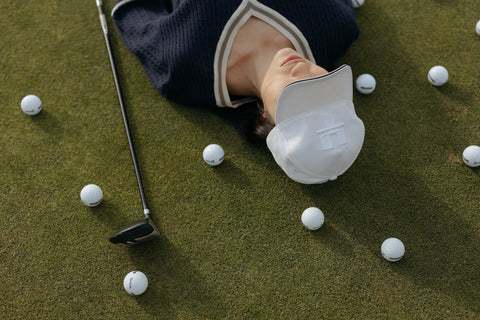Professional golfers know how to handle first tee nerves. They hit a lot of important opening tee shots, after all, and they wouldn't be professional golfers if they didn't know how to navigate the pressure.
But every two years, at the Solheim and Ryder Cups, pros are flung firmly outside of their comfort zones.
Every Ryder and Solheim Cupper who's hit that first tee shot has a story about it. With the surrounding crowds, some talk about shaking so much that they can't even get their golf ball on a tee. Scottie Scheffler said he was so terrified he couldn't feel his arms. Jess Korda, watching the Solheim Cup this week, said her first tee nerves at past Solheims made her driver shaft feel like a fishing rod.
Which begs the question: What happens to your golf swing, when golfers feel like they've got no arms and a fishing rod for a driver?
Well, that's what former Golf Digest Top 50 teacher Tim Mahoney sought to answer.
Sharing his results during last year's World Scientific Congress of Golf (which you can support right here) Mahoney ran an interesting experiment on first tee nerves. He took 100 of his students and, measuring using a Trackman and SportsBox AI, compared what an average swing from an average golfer looked like on the driving range, and compared it to the swing they made on the first tee.
No, this wasn't Ryder Cup pressure, but the results were still revealing for golfers of all levels. Here's what he found.
The irrational fear
As I wrote about in the most recent edition of Golf Digest, nerves are effectively a stress response. Humans are hard-wired to feel nervous when they feel threatened, or in danger, which in turn triggers their fight-or-flight response.
But of course, that's not super helpful when trying to hit a golf ball, because that nervousness usually leads golfers to a wildly irrational fear: The fear of missing the golf ball. Even for good golfers.
Which creates issues in their swing, as Mahoney explained…
The '80 percent' mistake
Mahoney said during his presentation that his test subjects told him after the test that, when they got nervous, their primary focus became to make contact (AKA, not miss the ball). This is anecdotally what we were from pros in Ryder Cup and Solheim Cup situations. It’s a largely irrational fear, but it had a real effect on their golf swings.
According to Mahoney's findings, 80 percent of golfers had a smaller amount of hip turn and chest turn, both on the backswing and downswing, on the first tee compared to the practice range.
Put simply: Golfers swings got shorter, and more hands-and-armsy. They stopped turning, both back and through.
This causes golfers' swings to get slower and also exaggerated their and tendencies. Golfers who tended to swing over-the-top swung more over the top on the first tee, for instance, and hit bigger slices thnt they would ordinarily.
All of this lead to about a 20 percent decrease in accuracy, and shorter distances. Shorter and more crooked—not ideal.
That's the pressure of a nervy first tee shot, though. Whether it be at your home club, or in an event like the Solheim Cup.
As for what you can do to combat it? Knowing your general tendencies is the first step, so you can attempt to override those instincts. Learning to play games on the range, and practice under pressure.
But sometimes, there's no beating first tee pressure. It's just about doing the best you can, and hoping for the best.
You can check out more from Golf Science right here.




